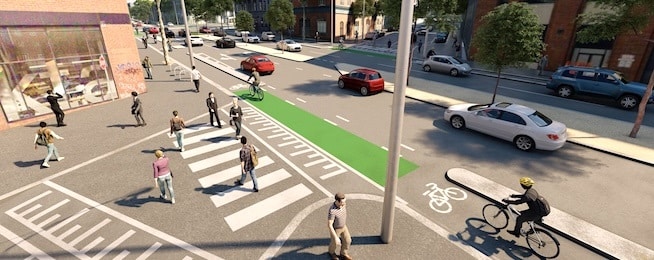The plan to upgrade Queensberry Street from North Melbourne to Carlton and add separated bike lanes has been given a big tick by recent public consultation.
The eastern section of Queensberry Street was temporarily modified with additional traffic lanes during the closure of Grattan Street for the construction of the Parkville underground station.
Now, it is due to be restored to its previous configuration of one traffic lane in each direction.
Seventy-six per cent of respondents supported the draft restoration design,while 23% were against.
Furthermore, 94% of riders supported the plan and so did 60% of non-riders.
The consultation summarised the positive responses as:
- reducing vehicle traffic in the local area
- improving safety for bike riders, drivers, and pedestrians
- improving liveability and the ‘neighbourhood feel’ of Queensberry Street
- more urban greening.
Opponents cited reduced parking and potential for increased congestion.
You can read the consultation report here:
https://participate.melbourne.vic.gov.au/queensberry-street-riding-lanes/community-consultation
The plans see Queensberry Street east of Peel Street in North Melbourne, as far as Rathdowne Street in Carlton, returned to one traffic lane in each direction, plus new separated kerb-side bike lanes with the bikes separated from traffic by parked cars and operator islands with space for tree planting.
Around 60 new trees will be planted in a move to green and calm the street.
The street has long been a popular east-west bike route across Melbourne’s inner north, but will be even more vital when Arden Station opens where Queensberry starts at Laurens Street in West Melbourne.
It provides links to the Moonee Ponds Creek Trail and to important north-south routes at Peel, Elizabeth, Swanston and Rathdowne streets.
Now that the universities of Melbourne and RMIT virtually converge on the street, it is a vital connection for students and staff at these massive institutions.
The community engagement findings will be reviewed and used to inform whether the project proceeds to the next design stage.
Or become our friend and subscribe to receive our fortnightly newsletter.


